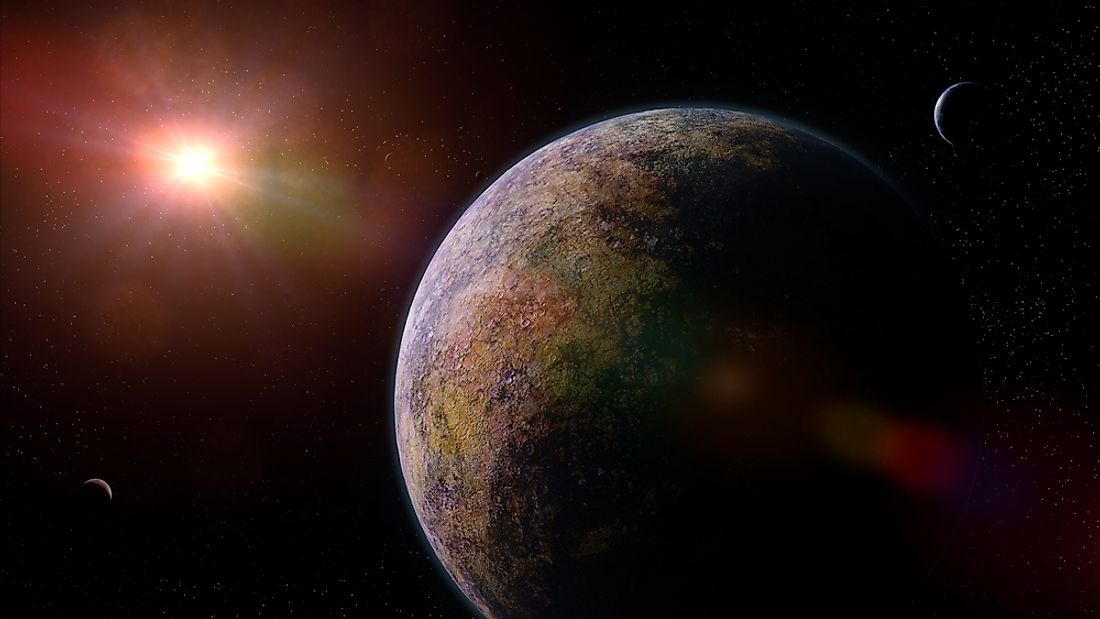What is the Goldilocks Zone?

The “Goldilocks zone” is a metaphor used to refer to the Circumstellar Habitable Zone (CHZ), which is a region in space where a planet is at a distance from its star, such that its surface is not too cold or too hot and water can exist in liquid form. The Earth’s location with relation to the Sun is believed to be part of the reason life exists. The name Goldilocks comes from a metaphor of a fairy tale known as “Goldilocks and the Three Bears.”
History and Origins
In Isaac Newton’s Principia, there is an estimate of the distance of the region upon which liquid water exists from the sun. Hubertus Strughold introduced the concept of a CHZ in 1953 through his treatise called The Green and the Red Planet: A Physiology Study of the Possibility of Life on Mars. Stephen H. Dole also contributed to the theory of the CHZ’s through his book, Habitable Planets for Man. In the 1970’s, the term Goldilocks zone came up referring to a specific region around a star where the temperature is right for the presence of water in its liquid form. The term Circumstellar Habitable Zone (CHZ) was introduced by astronomer James Kasting in the 1993. He became the first person to showcase the habitable zones for exoplanets in a more detailed way. In the year 2000, Donald Brownlee and Peter Ward came up with an idea of what they referred to as a galactic habitable zone. Later on, with the assistance of Guillermo Gonzalez, they developed the idea further. The Galactic Habitable zone is a region occupied by stars in the galaxy that is appropriately close to the galactic center, such that the elements are ideally heavy to support life. This region is also not too close to the center for the disruption of life as a result of high gravitational forces and intense radiations that characterize the galactic centers.
Determination
The radius of a planet’s orbit is used to determine whether it lies in the Goldilocks zone of its home star. Other factors are its mass and the star’s radiative flux. The planets within the Goldilocks zone are spread out. For this reason, the Goldilocks zone is divided into two regions. These are the conservative habitable zone and the extended habitable zone. The conservative habitable zone is the region where planets with lower masses (lower-mass planets) like the Earth can remain habitable. On the other hand, the extended habitable zone is that region where Super-Earth planets are capable of having the right range of temperature for water to exist in liquid form.
Habitability Outside the Goldilocks Zone
There is evidence of liquid-water environments existing in the absentia of atmospheric-pressure and even in temperatures that are not within the CHZ temperature range. There is also the possibility that some organisms may use alternative biochemistries, which may work without water. But thus far, it is just a possibility.
Significance for Complex and Intelligent Life
The Rare Earth hypothesis put forward the argument that the CHZ is one of the essential factors for the support of complex and intelligent life. Surface water is a key component in the emergence, survival, and evolution of multi-cellular life. Some people Like Ian Stewart and Jack Cohen, however, argue that complex, intelligent life may exist outside the CHZ. Whereas there are no entirely conclusive details about the CHZ and its relation to complex and intelligent life, it is likely that planets in the Goldilocks zone will remain critical to researchers looking for intelligent life outside the solar system.







